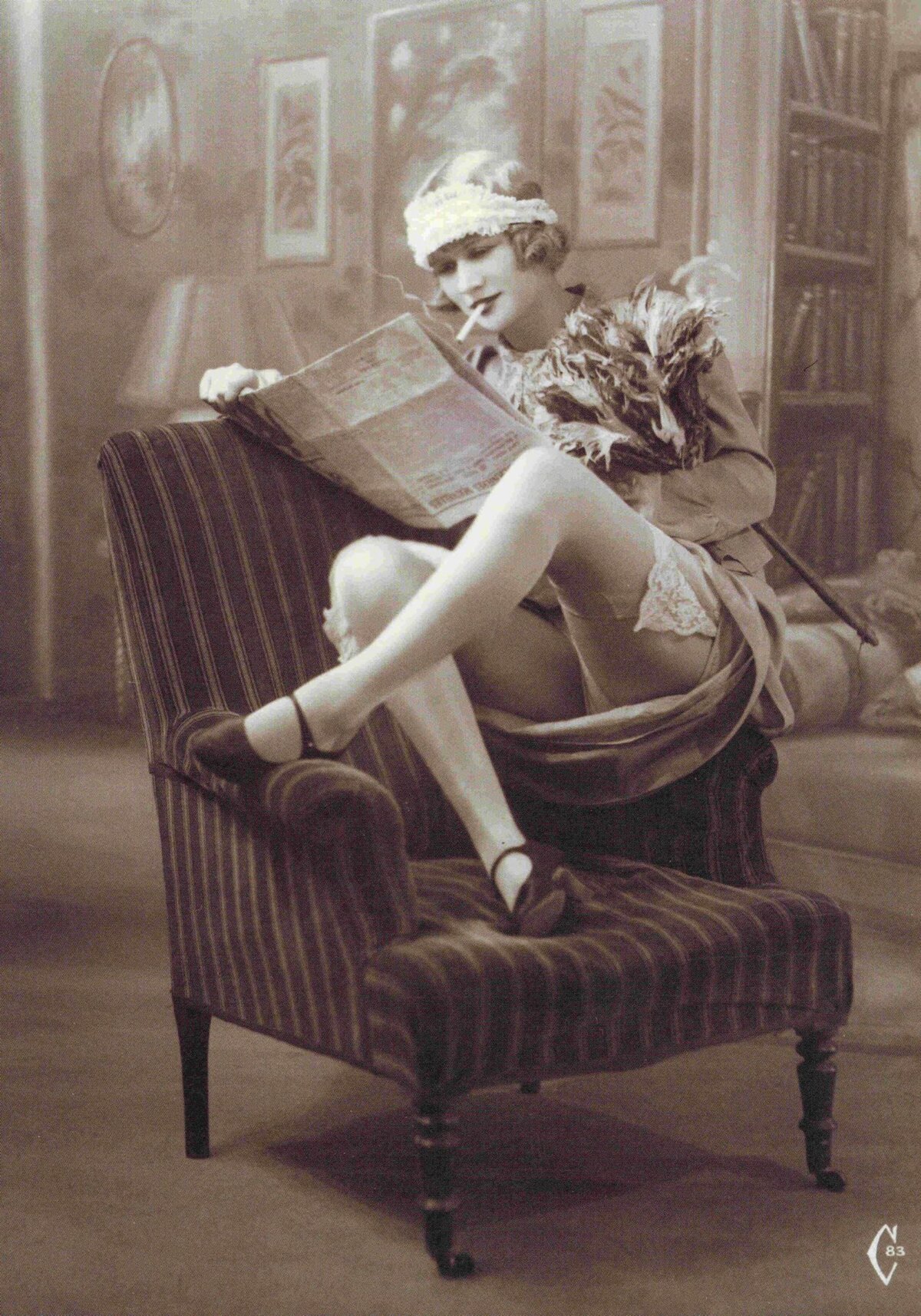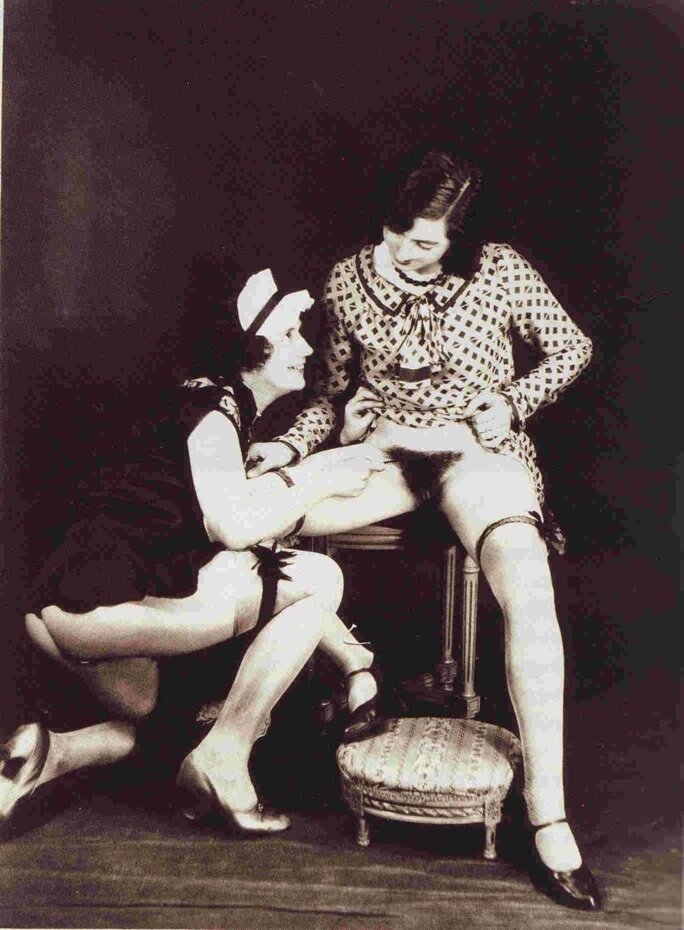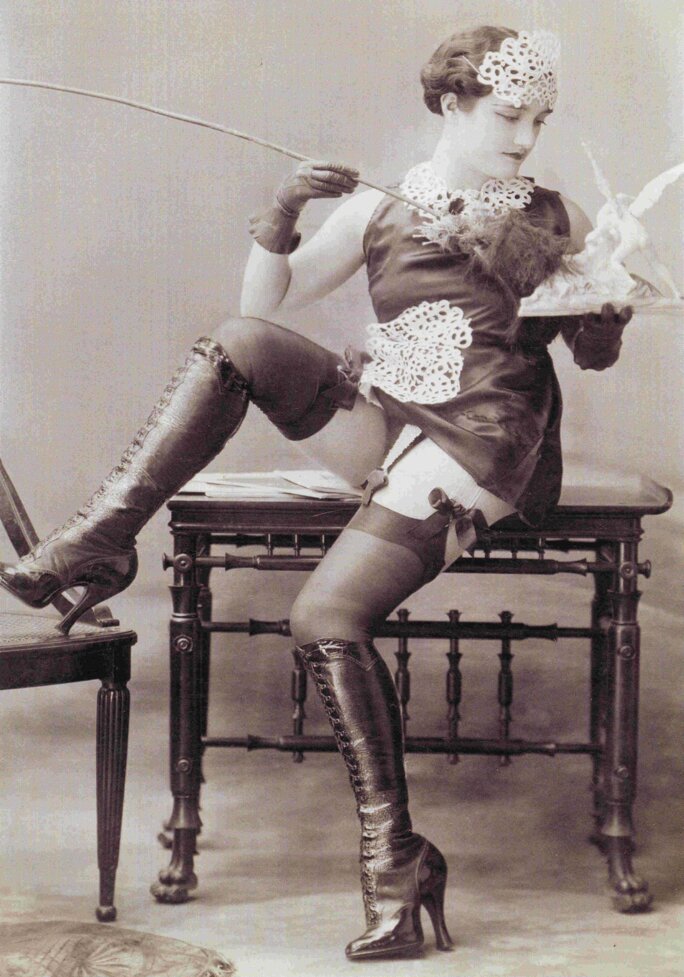Amid the fallout from the case of Dominique Strauss-Kahn, the former IMF chief and French presidential hopeful arrested in New York last month on sex assault charges, celebrated journalist Jean-François Kahn was forced into putting an end to his career. The 73 year-old press veteran and maverick caused outcry in France after he dismissed Strauss-Kahn's alleged acts of forcing oral sex and attempting rape against a hotel chambermaid as unlikely, but probably a mere "troussage de domestique".
The phrase, loosely meaning "upping a maid's skirts", relates to the 19th-century bourgeois tradition, both real and in erotic fantasy, whereby maids, soubrettes, were also a wealthy household's sexual servant. Aside from the controversy over his flippancy, Jean-François Kahn's headline-grabbing swansong, echoed in substance by other similarly dismissive remarks from Strauss-Kahn's political allies, has also revived interest in the fact and legend of la soubrette.
Camille Favre is a doctoral student with the University of Toulouse, specialized in 19th- and 20th- century erotic culture in France, about which she has given several public lectures, and is currently completing a thesis on the history of the French erotic press (1). In this interview with Joseph Confavreux, she explains how the soubrette became a figure of eroticism and pornography, and the social practices that lay behind the image.
Mediapart: Where does the erotic fantasy of ‘la soubrette' come from?

Enlargement : Illustration 1

Camille Favre: The French word ‘soubrette' comes from 18th-century Occitan ‘soubreto', feminine of ‘soubret', meaning ‘affected, precious'. [The dictionary] Le Littré gives it a Spanish etymology, from ‘sobretarde', meaning ‘late, at nightfall', since the soubrette was the maidservant who would deliver love letters in the evening. It soon came to mean an alluring, saucy ‘suivante', or lady's maidservant.
The erotic maid fantasy was forged in the 19th century, because it corresponded at the time to social practice. In a bourgeois home, the lady of the house constituted the reproductive sex and part of the social display of the husband. The erotic sex of the house could be personified by the young servant.
The servant not only had a social function, she often played a sexual role. She was at the disposition of the father of the family as well as of the son, who she would often initiate. Thus her body belonged to the household. A young man born into a 19th century bourgeois family who wanted to have sex before marriage had a choice between a brothel and the maid, or both.
All of this in the context of sexual double standards, because what the son of the family was entitled to was out of the question for the daughter. Girls brought up in total ignorance of their bodies received no sexual education and had to be virgins at marriage, proof of their families' respectability.
The lady of the house would therefore select a girl, most often from the country, the 19th century being a period of massive rural exodus. Her young age was supposed to guarantee her virginity and non-contamination by venereal disease. These girls were aged between 15 and 25, single, and often worked as maids in order to build up a dowry and trousseau.
Indeed this latter word, trousseau (2), has the same etymological root as the [French] verb trousser, since in both cases it is a question of garments. In the first case, of the bride's outfit, in the second the lifting up of skirts and petticoats in order to avoid their being soiled, or to indulge in sexual activity.
-------------------------
1: Entitled 'A History of The French Heterosexual Erotic Press - The Example of 'La Vie Parisienne' 1860-1950', her research centres on the magazine, 'La Vie Parisienne'.
2: The Collins English dictionary defines the noun 'trousseau' as "The clothes, linen etc., collected by a bride for her marriage " and describes its origin as "from Old French, literally: a little bundle, from trusse, a bundle ".
Mediapart: Why is it a practice organised by the mistress of the house and destined for the men of the household?
C.F.: For the lady of the house, who is aware of these practices, it is a question of limiting the potential damage that could be done by venereal disease, more common among prostitutes. It also offered the added advantage of letting her off the obligations of her sexual contract with her husband, at a time when the great majority of marriages were still arranged.
Moreover, the maid hardly represented a threat to her mistress, who could send her packing at the drop of a hat. The maid was in no position to steal her place, nor her husband or son, since the situation was one of both sexual and social domination.
If the maid were to become pregnant, she was sent away, unless she managed to get an abortion, which she would have known carried a legal penalty, and was dangerous in health terms. If she failed to obtain an abortion, she would join the droves of young unmarried mothers, and lose the status she had aspired to by becoming a servant in town.
Some maids no doubt rejected this sexual role so often considered part and parcel of their social function, but they were likely to lose their positions. Very few servants filed complaints for rape, as is shown by the work of [Editor's note: historian and sociologist] Georges Vigarello, because their word was discredited. And the tracing of paternity was authorised in France only from 1912.
This porosity of professional, social and sexual roles wasn't restricted to servants. There was also what was known as ‘the fifth quarter', which refers to the supplement to the meagre earnings of women workers, including those in the minor feminine trades, flower sellers, seamstresses, laundry women. These women would occasionally resort to prostitution on the boulevards of Paris in order to make ends meet.
These occasional prostitutes were referred to by more or less derogatory names ending with the suffix ‘ette', such as grisette or cousette. Some of these women also posed for the erotic and pornographic photos of the time.
Mediapart: How were these social relations represented in erotic and pornographic imagery?
C.F.: The maid was one of the most common figures to feature in the erotic and pornographic imagery of the 19th century. She would also appear, though a lot less frequently, in the illustrations of the bawdy press, which had a preference for the young ingénue. The figure of the maid allowed social and class domination to be combined with sexual or gender domination.

Enlargement : Illustration 2

From the beginning of the 20th century, it was also used as a way of broaching the topic of sapphism. The daily routines of the bourgeois lady at home, getting dressed, bathing, and so on, became a pretext for hanky-panky between lady and servant. This erotic situation was widespread in the pornographic films screened in brothels during the1920s. It provided the added thrill of voyeurism, inviting viewers to spy on intimate, private activity, and afforded an opportunity for spanking, catering to sadomasochistic fantasy, with the lady of the house having to punish her clumsy servant.
The frequent presence of this figure in erotic fantasy coincides with a time when the boom in the market of obscenities, erotic objects, magazines, photos and films. This is highlighted by the research carried out by [historian and author] Maxence Rodemacq (1). Under the Second Empire, erotica and pornography were very costly. The price of a daguerreotype was half the average weekly wage. Pornography was the reserve of a rich elite respected for its irreproachably high moral standards. It was used in the boudoir, which guaranteed, in a way, an appropriate usage.
The Third Republic was at once the time when eroticism and pornography were democratised and when they were increasingly censored, because sex on offer to all and sundry meant it could be accessed by those who weren't supposed to know about it, the young, the simple public, workers and women.
-------------------------
1: 1855-1930, author of a thesis entitled The Industry of Obscenity in Paris.
Mediapart: What are the maid's trappings in erotic photography?
C.F.: Essentially the black dress, apron and cap. And then of course there's her fetishist accessory, the feather duster. Some photos from the 1930s actually show them with a vacuum cleaner, keeping up with technical innovation. One particular couple, who signed their work Yva Richard, established the code, since the maid is a recurring figure in their iconography. With this couple, and other photographers, the maid has something slightly provocative about her. She smokes instead of working, reads Monsieur's newspaper, perches on furniture, on the edges of armchairs.

Enlargement : Illustration 3

With this staged scene, the maid surprised in the absence of her masters, we are in a situation of voyeurism and complicity. The Yva Richard couple also designed lingerie. They used their erotic and pornographic photos to sell their fetishist underwear and vice versa, very swiftly becoming the specialists in leather corsets and high-heeled boots.
It was under the Third Republic that most codes were fixed, along with erotic accessories that were to be taken up again throughout the 20th and 21st centuries, stockings, garters, high heels. In the late 19th and early 20th century, the leg was eroticised, from the French Cancan to the flapper style.
Accessories were borrowed either from showbiz, or from prostitution. High heels, for example, or fishnet stockings, which allowed for a play on nudity, with the now-you-see-it, now-you-don't, a key erotic device.
Mediapart: Is there a male equivalent of the French maid?
C.F.:There was no equivalent at the time, with the valet or other servant. Once again, this coincides with the double standards for sexuality. You can find a few erotic or pornographic photos showing working class men, peasants, or roughs from the street with bourgeois ladies.
One photo, entitled The Satyrs, dated 1890, is an interesting case in point. A more or less bourgeois lady is gagged, tied up and raped by two men wearing workers' cloth caps. In the erotic imagination of the 19th century, when women had sexual relations with a man from a socially inferior class, it was rape. That it could result from her desire was unthinkable.
But the reversal of social hierarchy where a lady is taken by her manservant dates back to the 18th century. The fantasy belongs more to the aristocracy than to the bourgeoisie. In the 18th century, pornography had a subversive, political dimension, very anticlerical for example, while in the 19th century there was more a consumerist pornography.
Of the male archetypes in the erotica of the turn of the 20th century, the most prominent were, first and foremost, ‘Monsieur', to be seen in turn with the maid, the peasant girl, the bourgeois lady. And then there was the sailor, who fulfils the fantasy of elsewhere, of the footloose, of the dangerous profession. The sailor is also a recurring figure in homosexual fantasy. There too, male figures are clearly identifiable thanks to their uniforms and the fetishist accessories, their hats.
Mediapart: How long did the erotic archetype of the maid persist in erotic imagery and fantasy?
C.F.: Right up to today, even though the world of servants has disappeared and we now talk about cleaning ladies, maintenance agents and floor technicians. But from the early 20th century, the stereotype of the soubrette was faced with competition from other figures reflecting the evolution of society.
After World War I, the nurse also appeared in erotic imagery. Other than prostitutes, nurses were the only females who soldiers were able to see for months on end. The figure was rife in the bawdy and erotic press of the time, which was distributed free in the trenches. Then, with public education and the development of office life, the schoolteacher and the typist, erotic ancestor of the secretary, also became erotic archetypes. All these characters have a clearly identifiable uniform that is a support for fantasy.
The French maid, nurse, schoolteacher and secretary are stereotypes that have passed the test of time because they have remained in tune with the development of the social and moral codes of society. Even if the maid of today isn't put in exactly the same situations as in the 1920s, there are constants such as her cap, apron, black dress, feather duster, stockings and high heels.
In the golden age of the pin-up, the 1940s and 1950s, a lot of them were dressed up as maids, since they evolve in the private sphere of the home, the domestic universe. This maid pin-up does the dusting, and, oops, her skirt lifts to reveal her stockings and garters. And yet, with the pin-up, we're in a different kind of eroticism, different from that of the 19th century.
The pin-up is a healthy figure, she doesn't smoke, for example, reassuring, with motherly curves. She isn't worrying, because she doesn't have an active sexuality, she only reveals her nudity inadvertently, contrary to the 1930s vamp or the 1920s flapper. Bernard of Hollywood, an American photographer of the 1950s, also used the figure of the French maid for some of his advertisements.

Enlargement : Illustration 4

This same fantasy can be seen in the work of Bill Ward, a more or less underground illustrator of the 1960s and 1970s, who worked for Humorama and Cracked, or in Playboy, with playmate maids and a franker sexuality. Today, with the artist Hajime Sorayama, we find maids with legs spread, masturbating.
Conversely, some feminist artists of the 1970s also went to work on the archetypes of the erotic imagination, deconstructing fantasies to spotlight the mechanisms behind them. In her series Untitled Film Stills, Cindy Sherman dressed up as a librarian and as a maid in B-movie scenes. This masquerade exhibits the perverse pattern installed by the male gaze and desire predominant in the erotic and pornographic imagination forged in the 19th century.
-------------------------
English version: Chloé Baker
(Editing by Graham Tearse)


